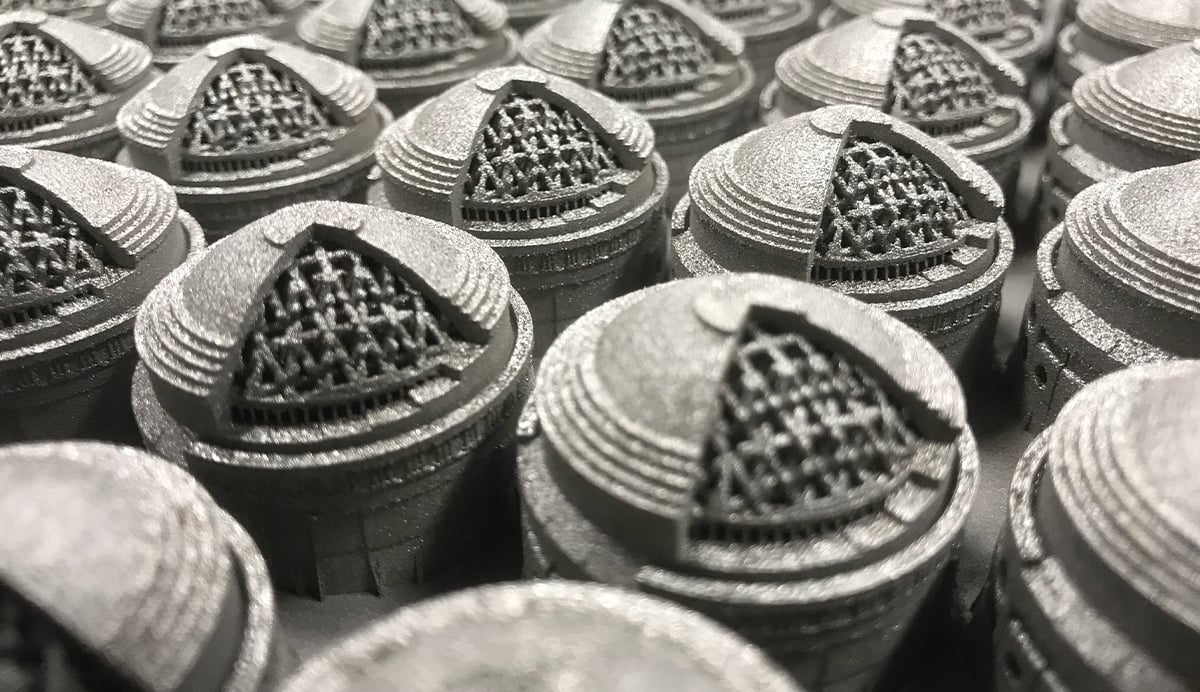Why You Should Learn about Additive Manufacturing from MIT
Additive manufacturing is revolutionizing the way products are designed, produced, and serviced in industries ranging from aerospace to automotive to healthcare.
“Most large companies that touch manufacturing are thinking about the implications of additive manufacturing to their organization—and that’s if they don’t already have teams dedicated to this objective,” says Professor Hart, lead instructor of MIT xPRO’s additive manufacturing course.
Industry leaders who seek to stay ahead of the curve must have a plan for harnessing the power of this innovative technology—and there’s no better place to learn about additive manufacturing than MIT.
MIT Launches a New Era in 3D Printing
MIT is one of the first institutions that comes to mind in discussions about additive manufacturing and 3D printing, and with just a little digging, it's easy to understand why. Our institution has been at the forefront of this game-changing technology since its introduction into modern life. In fact, an MIT professor is credited with inventing the term 3D printing.
According to MIT News, “Emanuel Sachs, professor of mechanical engineering, invented a process known as binder jet printing. In binder jet printing, an inkjet printhead selectively drops a liquid binder material into a powder bed—creating a three-dimensional object layer by layer. Sachs coined a new name for this process: 3D printing.”
Other 3D printing processes have emerged in recent decades, including selective laser sintering (SLS), fused deposition modeling (FDM), stereolithography (SLA), and more. Professor Hart notes that early on, 3D printing was a bespoke prototyping technology, but it has proven to be a viable production technique in recent years.
MIT Leads the Way in 3D Printing Research
Since Professor Sachs invented binder jet printing, MIT has been at the forefront of many significant 3D printing developments in the past three decades. Professor Hart described some initiatives he and his team have been working on.
To overcome barriers to the widespread adoption of 3D printing, such as speed, cost, and quality, Professor Hart led a research group examining a 3D printing process known as extrusion. They then designed a new printer capable of printing ten times faster than comparable printers.
Professor Hart's team has also experimented with printing new materials, including cellulose and carbon nanotubes, and improving and monitoring the quality of metal 3D printing, which poses incredible potential for many industries. He is currently working to develop a printer funded by the Department of Energy that will enable next-generation turbine blades for higher efficiency energy conversion.
Professor Hart also co-founded VulcanForms, a company that builds and operates advanced digital manufacturing infrastructure, with his former graduate student, Martin C. Feldmann.
“Most companies build and sell 3D printers and put risk upon the customer who wants to adopt the technology. That has been successful. But in order to bring additive to true production scale, we felt we needed to build not only the technology but also a vertically integrated manufacturing company. So VulcanForms is a digital manufacturing company that uses additive and other digital technologies to stitch together a complete value chain,” says Professor Hart.
Of course, Professor Hart is just one of many individuals at MIT pushing the boundaries of what’s possible with 3D printing. Search the term “additive manufacturing” on the MIT News website, and you’ll find story after story about incredible developments at MIT:
- Producing furniture-sized aluminum parts in minutes using rapid 3D printing with liquid metal
- 3D printing components for a portable mass spectrometer, a key step toward portable mass spectrometers that could identify unknown chemicals in remote settings
- Harnessing 3D printing to strengthen a key material in aerospace and energy-generation applications
Professor Hart predicts that additive manufacturing will eventually touch nearly every product's life cycle. He explains, “Additive manufacturing will not make everything in the future. It won't make close to everything. But it will touch the life cycle of nearly every product that's designed and made. That can be prototyping, tooling, service parts, or volume production of at least some of its components.”
Study Additive Manufacturing at the Institution that Started It All
If you're interested in taking an additive manufacturing course, there's no better place to learn about this technology than the place that started it all. Best of all, with MIT xPRO's online additive manufacturing course, you can learn from the best in the industry from the comfort of your own home.
More than 5,000 professionals from organizations like Boeing, Ford, Tesla, and Apple have participated in MIT xPRO’s additive manufacturing course. In a survey of learners, 51% said they used the knowledge and skills they gained within three months of taking the course, 41% said they were given new responsibilities in their roles after taking the course, and 91% said they would mention the course in future job interviews.
What are you waiting for? Enroll in Additive Manufacturing for Innovative Design and Production today.



